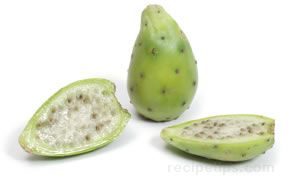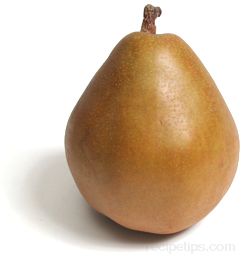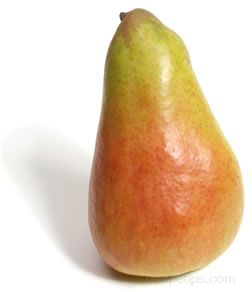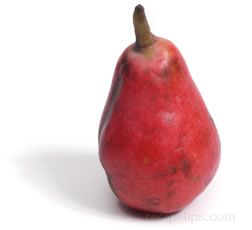The common varieties of this pear are the purple (deep crimson red), white, yellow, and brown pear, identified by the color of the outer skin. The purple variety is the sweetest of all the prickly pears. Generally, the pears are peeled by making a slit in the skin and peeling it away or sectioned lengthwise, allowing for ease of removing the skin and seeds before being served as a cold or fresh fruit. This pear is often served in salads, baked in breads and pasteries, made into jellies, jams and candy, pureed for use in beverages, and commonly served as a dessert ingredient. If the seeds are not desired for eating (either whole or pureed into the fruit), they can be dried and used to make flour for baked goods. In addition to being referred to as prickly pears or cactus pears, this fruit is also known as the Christian fig, Indian fig, Barbary fig, tuna fig, or nopal.
The fruit is available from fall through spring and can be found in tropical, Mexican, and Italian markets, as well as produce markets that stock specialty fruit. When selecting, choose fruit that has a deep, even color and yields to slight pressure. Unripened prickly pears can be ripened by storing at room temperature until soft. Ripe fruit can be stored in the refrigerator for approximately a week. The pad or paddle (leaf) of this cactus is referred to as nopales when served as a fresh or cooked vegetable, nopalitos when cubed and sectioned, and acitrónes when candied.













